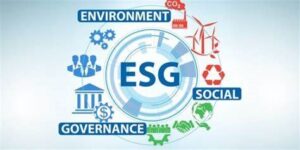Recently enacted legislation in New Jersey to encourage the use of low-carbon concrete in state-funded construction projects could not only yield significant reductions in the carbon footprint of Garden State bridges, sidewalks, and foundations, but could be used as a model by other states and the federal government.
The law, known as the Low Embodied Carbon Concrete Leadership Act (LECCLA) (S-287), offers tax incentives for producers who supply state projects with concrete containing reduced quantities of embodied carbon. As a first step, the New Jersey Department of Environmental Protection (NJDEP) will publish rules establishing baseline embodied carbon quantities for concrete. Beginning in 2024, concrete producers who supply at least 50 yards of concrete to state-funded projects and whose product contains less embodied carbon than the baseline will be eligible for corporation business tax (CBT) credits of up to 8 percent of the total cost of the contract.
Several means of reducing embodied carbon in concrete are incentivized by the law. Producers can obtain tax credits of up to 5 percent by reducing embodied carbon in concrete by: (i) improving energy efficiency at the cement plant or concrete plant stages; (ii) substituting low carbon fuels for carbon-intensive fuels at the cement plant or concrete plant stages; (iii) using locally sourced ingredients in concrete mixes, reducing transportation-related emissions; (iv) reducing cement content in concrete mix by substituting materials such as fly ash, slag, or recycled ground-glass pozzolan (collectively known as supplementary cementitious materials, or SCMs), to reduce the quantity of emissions-intensive cement in the mix; (v) capturing and storing point source carbon emissions during the cement plant or concrete plant stages; or (vi) utilizing and storing carbon in concrete. An additional 3 percent tax credit will be available to producers who use carbon capture utilization and storage (CCUS) technology in the concrete manufacturing process. The two tax credits can be combined.
Concrete producers will need to submit verified Environmental Product Declarations (EPDs) for the concrete they supply to state projects in order to become eligible for the tax credits. EPDs are measurements of the life cycle environmental attributes of a particular product, in this case total carbon emissions, using an ISO-published methodology.
Because of the low margins in the highly competitive concrete industry, producers may be able to take advantage of any cost savings generated by these tax credits to pass along lower bids to project proponents, and thereby win additional business. Companies that invest in carbon-reducing practices, such as increasing use of SCMs in their mixes, switching to cement produced using lower carbon fuels or at plants employing CCUS technology, or finding suppliers in closer proximity to their ready-mix plants, will have a significant advantage over companies that are slower to act. Investment in carbon reduction will, potentially, become an essential catalyst to staying competitive in the market.
The tax credit system is also uniquely designed to stay ahead of the curve. NJDEP has the power to shift the concrete carbon baseline lower, thereby forcing producers to bring embodied carbon levels down even further to continue to qualify for the full tax incentives over time. The approach in New Jersey goes further than the federal Buy Clean initiative, which sets embodied emissions benchmarks for various materials that federal project suppliers must meet to be considered for federal contracts. In New Jersey, suppliers must bring embodied emissions below the threshold in order to qualify.
One criticism is that the state has only allocated $10 million in tax credits per year to qualifying companies, and no producer may win more than $1 million in credits in any year. But the law will do its job if it succeeds in nudging the concrete industry toward a lower carbon norm.
Many stakeholders hope, and some even predict, that the New Jersey approach will be quickly adopted by other states. Neighboring New York has been studying a low-carbon concrete program and is set to consider legislation in the coming months. Now that New Jersey has acted first, many hope that New York will also opt for an incentive-based approach that could rework the economics of concrete production in the Empire State. Other states, such as California, could also consider the model in the coming years. Of course, the biggest prize would be the federal government, which is one of the biggest concrete procurement entities in the world and could radically reshape the industry if it adopted an incentive-based model for carbon reduction.
The New Jersey program also arrives just as municipalities across the nation, including New York, Boston, Chicago, Seattle, and others, are implementing programs to reduce carbon emissions from their built environments. Broad availability of low-carbon concrete would improve the emissions profiles of many buildings and their supporting infrastructure if widely adopted, and cities would be wise to consider incentive programs similar to New Jersey’s in order to put this technology into wider use.
Duane Morris has an active ESG and Sustainability Team to help organizations and individuals plan, respond to, and execute on your Sustainability and ESG planning and initiatives. For more information or if you have any questions about this post, please contact David Amerikaner, Sheila Raftery Wiggins, Brad A. Molotsky, Alice Shanahan, Jeff Hamera, Nanette Heide, Joel Ephross, Jolie-Anne Ansley, Robert Montejo, Seth Cooley, or the attorney in the firm with whom you are regularly in contact.

